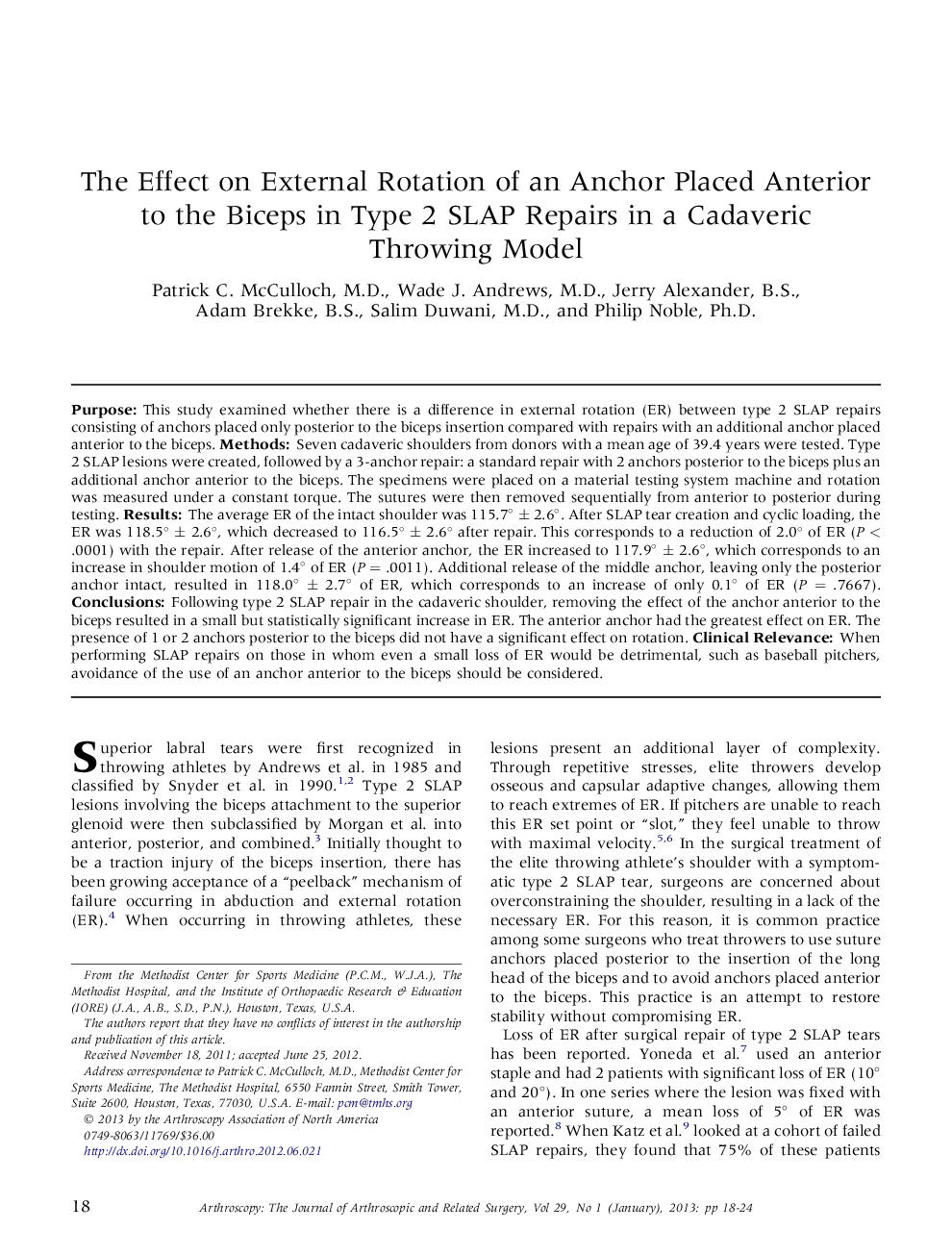| Article ID | Journal | Published Year | Pages | File Type |
|---|---|---|---|---|
| 4043957 | Arthroscopy: The Journal of Arthroscopic & Related Surgery | 2013 | 7 Pages |
PurposeThis study examined whether there is a difference in external rotation (ER) between type 2 SLAP repairs consisting of anchors placed only posterior to the biceps insertion compared with repairs with an additional anchor placed anterior to the biceps.MethodsSeven cadaveric shoulders from donors with a mean age of 39.4 years were tested. Type 2 SLAP lesions were created, followed by a 3-anchor repair: a standard repair with 2 anchors posterior to the biceps plus an additional anchor anterior to the biceps. The specimens were placed on a material testing system machine and rotation was measured under a constant torque. The sutures were then removed sequentially from anterior to posterior during testing.ResultsThe average ER of the intact shoulder was 115.7° ± 2.6°. After SLAP tear creation and cyclic loading, the ER was 118.5° ± 2.6°, which decreased to 116.5° ± 2.6° after repair. This corresponds to a reduction of 2.0° of ER (P < .0001) with the repair. After release of the anterior anchor, the ER increased to 117.9° ± 2.6°, which corresponds to an increase in shoulder motion of 1.4° of ER (P = .0011). Additional release of the middle anchor, leaving only the posterior anchor intact, resulted in 118.0° ± 2.7° of ER, which corresponds to an increase of only 0.1° of ER (P = .7667).ConclusionsFollowing type 2 SLAP repair in the cadaveric shoulder, removing the effect of the anchor anterior to the biceps resulted in a small but statistically significant increase in ER. The anterior anchor had the greatest effect on ER. The presence of 1 or 2 anchors posterior to the biceps did not have a significant effect on rotation.Clinical RelevanceWhen performing SLAP repairs on those in whom even a small loss of ER would be detrimental, such as baseball pitchers, avoidance of the use of an anchor anterior to the biceps should be considered.
